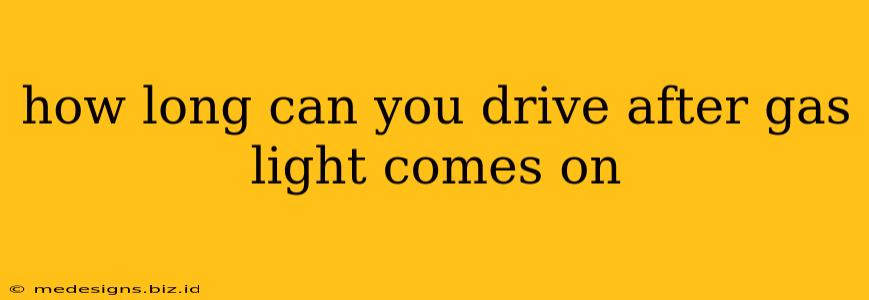That blinking gas light can be a stressful sight. But how far can you really go after it illuminates? The short answer is: not very far. While the exact mileage varies greatly depending on your vehicle, driving style, and terrain, it's generally not advisable to push it beyond 30-50 miles.
This isn't just about running out of gas on the side of the road; it's about protecting your car's engine. Let's dive deeper into why.
Why You Shouldn't Ignore the Gas Light
Ignoring that warning light isn't just inconvenient; it could damage your car. Here's why:
1. Fuel Pump Damage:
Modern cars rely on the fuel pump submerged in the gas tank to keep the engine running. This pump is cooled by the fuel itself. When you run low on gas, the pump can overheat, leading to premature wear and tear, ultimately requiring costly repairs.
2. Sediment and Debris:
The bottom of your fuel tank often contains sediment and debris. When your fuel level gets too low, your car's fuel pump might start sucking up this sediment, leading to clogging and damage to the pump and fuel injectors. This is another costly repair you'd rather avoid.
3. Engine Damage:
Running completely out of gas can cause significant damage to your engine. Without fuel, the engine can seize up, requiring a potentially catastrophic and expensive overhaul. This is the worst-case scenario you definitely want to avoid.
How Far Can You REALLY Drive?
The range you have left after the gas light turns on varies based on several factors:
- Your car's make and model: Different vehicles have different fuel tank sizes and fuel efficiency. Consult your owner's manual for the most accurate information for your specific car.
- Your driving style: Aggressive driving (rapid acceleration and braking) consumes more fuel than smooth, gentle driving.
- Terrain and conditions: Driving uphill or in heavy traffic will use more fuel than driving on a flat road at a steady pace.
- Fuel efficiency: Your car's fuel efficiency directly impacts how far you can drive on the remaining fuel.
General Rule of Thumb: Most cars provide a buffer of 30 to 50 miles after the light comes on. Think of this as a warning, not an invitation to keep driving until you're completely out of gas.
Best Practices:
- Fill up regularly: The best way to avoid this situation is to fill your gas tank regularly, ideally before it gets too low.
- Pay attention to your fuel gauge: Don't wait until the last minute. Start looking for a gas station once your fuel gauge is nearing the empty mark.
- Check your owner's manual: Your owner's manual will provide the most accurate information on how far you can drive after the gas light illuminates.
- Plan ahead, especially for long trips: Make sure you know where the nearest gas stations are, especially when traveling in remote areas.
In conclusion, while you might be able to eke out a few more miles after your gas light comes on, it's never worth the risk of damaging your car's engine. Fill up as soon as you see the light and avoid potential costly repairs. The small amount of extra gas you save isn’t worth the potential thousands of dollars in engine repairs.
